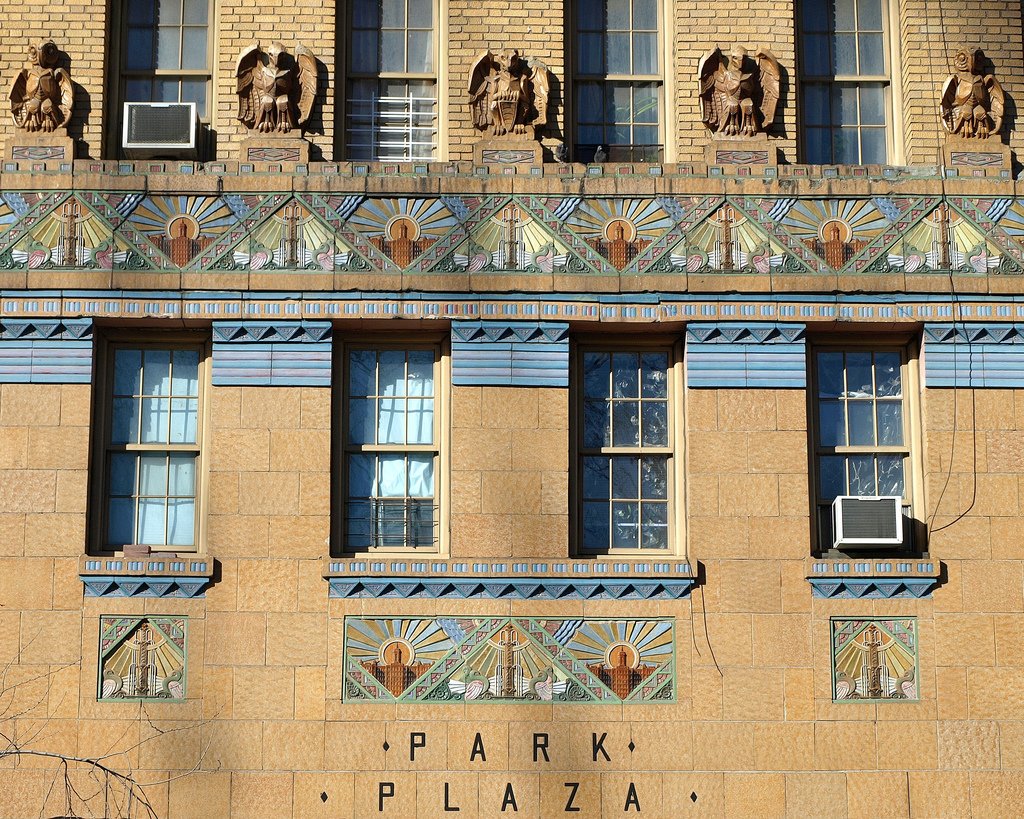#5174. Decorative Park Plaza Facade: A Synthesis of Art Deco and Neo-Egyptian Motifs
The image shows a fragment of the Park Plaza building facade — an excellent example of Art Deco architecture with Neo-Egyptian elements. The facade is made of two primary materials: the upper part is faced with light-colored brick, while the lower section features sandstone-colored stone blocks.
The architectural composition is distinguished by a clear rhythmic pattern formed by symmetrically placed windows and decorative elements. Of particular note is the richly adorned frieze between floors with vibrant mosaic panels. These panels depict stylized sunrays and geometric ornaments in blue-green tones with golden accents, typical of Art Deco aesthetics.
The upper level of the facade is decorated with sculptural representations of eagles or griffins placed between windows, giving the building monumentality and referencing imperial motifs. At the lower part of the facade, the name "PARK PLAZA" is carved in large letters, clearly identifying the building.
The windows of the building have a simple rectangular form with small muntins, characteristic of urban architecture from the first half of the 20th century. The lower tier of decorative panels repeats the motifs of the upper frieze, creating compositional cohesiveness. Overall, the facade demonstrates a magnificent balance between the functionality of an urban building and the artistic expressiveness of its decorative elements.
